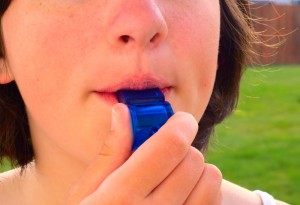 Separation anxiety is one of the most misdiagnosed behavioral conditions. The hallmarks of separation anxiety are:
Separation anxiety is one of the most misdiagnosed behavioral conditions. The hallmarks of separation anxiety are:
Excessive vocalization
Salivation
Inside Elimination (for a house trained dog)
Destructive behaviors directed at entry and exit points
For separation anxiety to be considered, some or a combination of these symptoms must occur ONLY in the absence of people. The behaviors most commonly occur within 45 minutes of departure.
If your dog destroys your furniture when you leave, it is less likely due to separation anxiety and more likely due to too much freedom and not enough exercise. Dogs with separation anxiety destroy items that are in the path of their escape, not couch cushions in the middle of the room!
If your dog barks and whines in the crate this may or may not be separation anxiety. Does your dog bark and whine in the crate if crated at the same times of day when you are home?
Elimination in the crate or in the house is not necessarily a sign of separation anxiety. Is the dog house trained? Will the dog eliminate in his or her crate when you are home?
Treating dogs with true separation anxiety is challenging. It will take several days or even weeks. It depends on how much time you have to dedicate to the treatment. The main obstacle is that every instance of separation perpetuates the condition and offsets progress. For example, suppose you make great progress over the weekend, but you go back to work on Monday and leave your dog alone. Your progress will be lost.
Treating separation anxiety is a process not an event. First you’ll teach the dog to relax before you leave the house. Then you’ll leave for very short increments while your dog relaxes. As the exercises progress, you’ll leave for longer and longer periods. If you decide to treat your dog for separation anxiety, you’ll need to make arrangement to never leave the dog alone during the treatment period. Day care, friends’ homes and other babysitters can be helpful during this period.
Click here for detailed instructions for treating separation anxiety in dogs , compliments of the ASPCA virtual behaviorist.
Happy Training!
Alan J Turner – Companion Animal Behavior Counselor & Trainer, Canine Specialization
How’s Bentley – Private and Group Dog Obedience
Memphis, Collierville, Bartlett, Cordova, Germantown TN

 Whistle Come
Whistle Come